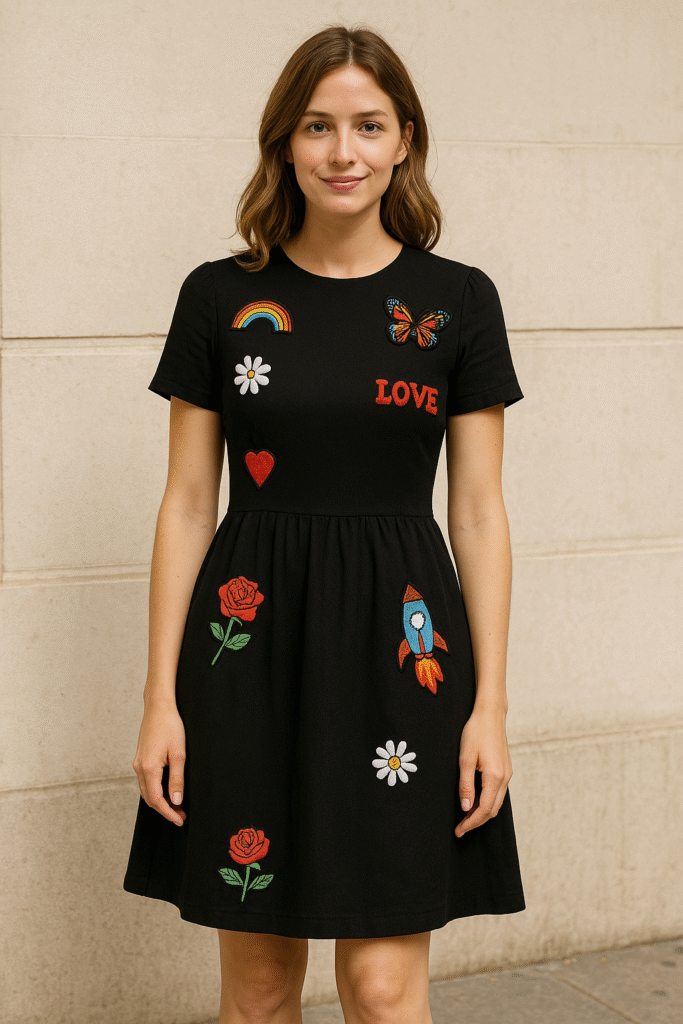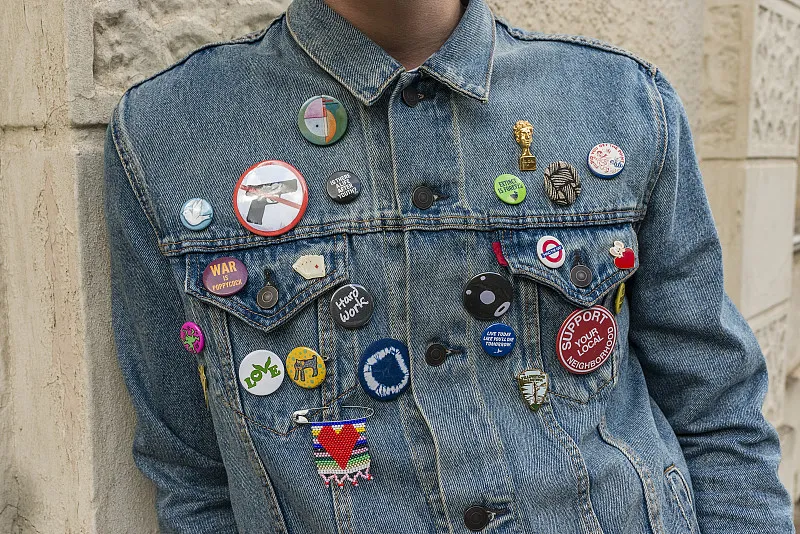Feeling tired of your wardrobe’s outdated look? Sporting plain outfits may cause your personal style to blend into the background. However, DIY patches offer a straightforward method to infuse color and on-trend flair into your clothing.
Those with a keen eye for fashion use DIY patches to introduce seasonal colors, blend textures, and align with current trends. Whether adorning denim jackets, canvas bags, or cotton tees, these embellishments effortlessly elevate your ensemble.
Continue reading to discover how to integrate patches with contemporary color trends and various garment types.

How do DIY patches reflect color theory and seasonal trends?
In contemporary fashion, color coordination is crucial—and patches serve as the perfect medium for this. Vibrant motifs such as orange or teal patches introduce contrast to neutral attire. During the spring season, pastel-themed patches adorned with soft embroidery are en vogue. Conversely, in the fall, deep shades of burgundy, forest green, or mustard-toned designs mirror the palettes of the season.
Present-day fashion often embraces color blocking, and patches play a role in achieving this aesthetic. Placing a striking red patch on a navy tote or a subtle lavender accent on beige outerwear creates a stylish equilibrium. For Gen Z aesthetics like Y2K or dopamine dressing, holographic or neon patches provide the vibrant edge necessary to stay on trend.
Minimalists can opt for tone-on-tone looks—such as placing a pale gray patch on ash-colored joggers to subtly enhance texture. Patches enable wearers to keep up with fashion cycles without overhauling their entire wardrobe—simply peel, press, or sew them onto desired garments.


How can patches be matched with different garments and textures?
In addition to color, fabric texture plays a significant role. A glossy patch placed on matte cotton generates dynamic visual contrast. Felt or chenille designs impart warmth and coziness when applied to soft knits. Metallic or glitter-stitched accents are best suited for structured fabrics like canvas or wool blends, allowing them to command attention.
For athleisure or utility fashion, opt for tactical fonts and clean lines. Adhere sleek, matte-finish designs to track pants or gym bags. To achieve romantic or cottagecore looks, consider sewing floral motifs or vintage-inspired patches onto lace collars or linen skirts to evoke a dreamy, nostalgic charm.
Denim, undoubtedly, serves as the quintessential canvas for patches. Patches tailored for high-waisted jeans or cropped vests can feature gradients, doodles, or pop culture references to align with current runway trends. Balance is imperative—if your garment boasts heavy texture, choose flat, embroidered styles. On smooth surfaces, opt for plush or 3D patches.


How to incorporate DIY patches into trend-driven outfit themes?
Here’s how DIY patches harmonize with today’s prominent style movements:
▲ Coastal Grandmother: Envision cream cardigans adorned with blue-toned appliqués such as seashells or coastal florals. Soft stitching complements flowy linen dresses.
▲ Gorpcore: Adorn nylon windbreakers or cargo vests with nature-themed patches—depicting mountains, trail markers, or brand-style typography in muted earthy tones.
▲ K-pop Street Style: Utilize shiny or layered cartoon-style patches on oversized jackets or two-tone denim. Vibrant hues of green, purple, and silver make them stand out on camera.
▲ Retro Futurism: Merge silver vinyl patches or geometric neon patterns with black or white base pieces for a futuristic twist.
Consider proportion with every outfit. Small, scattered patches offer subtlety, while large back-panel patches make bold statements. Placement is just as crucial as color—experiment with placing patches along cuffs, hems, or shoulders to add elevated detail.
Summary
DIY patches breathe new life into your wardrobe by infusing trend-aligned color and texture, enabling fashion to evolve without necessitating the replacement of your garments.



